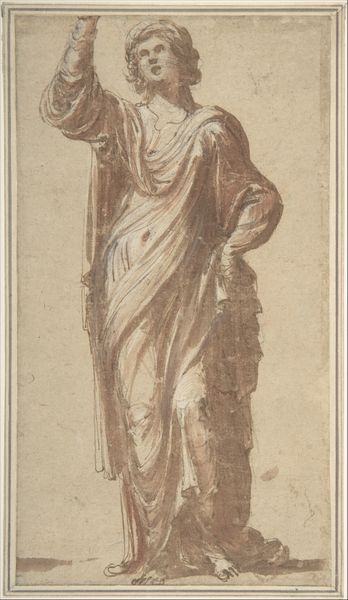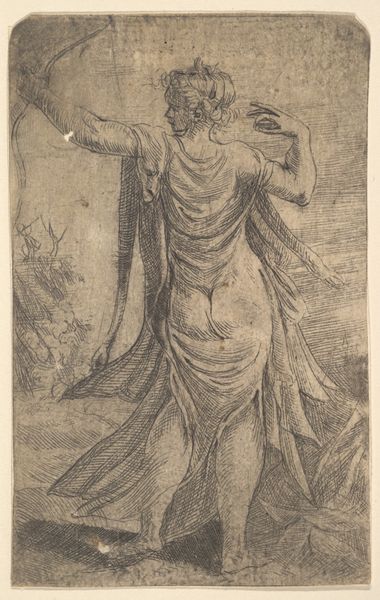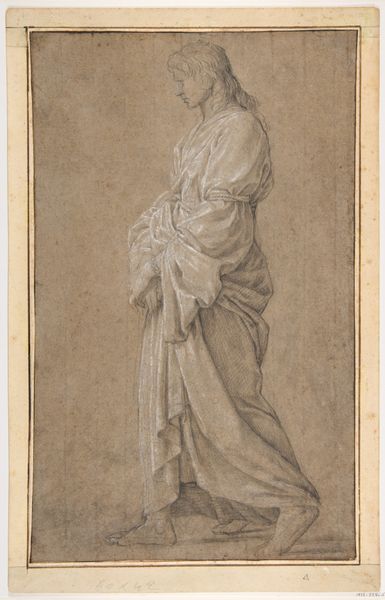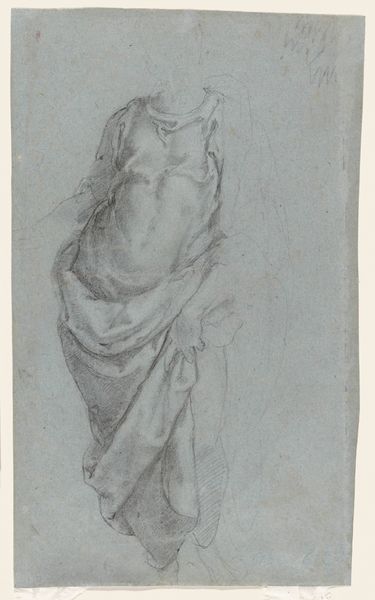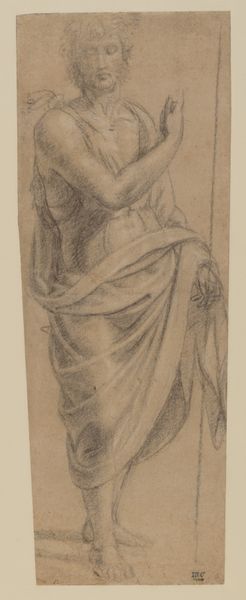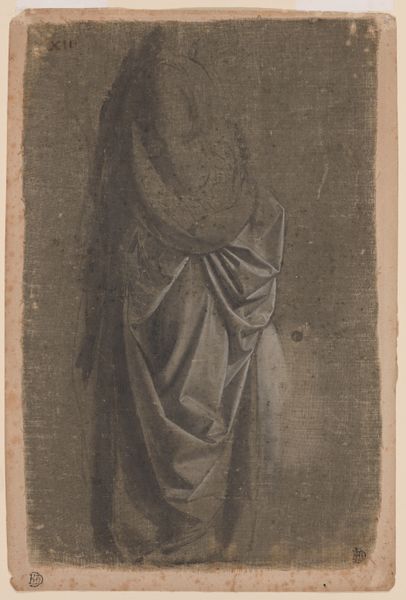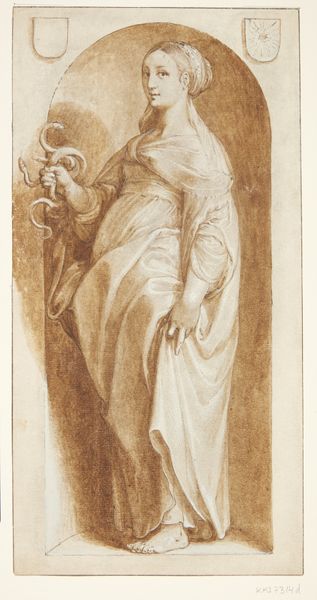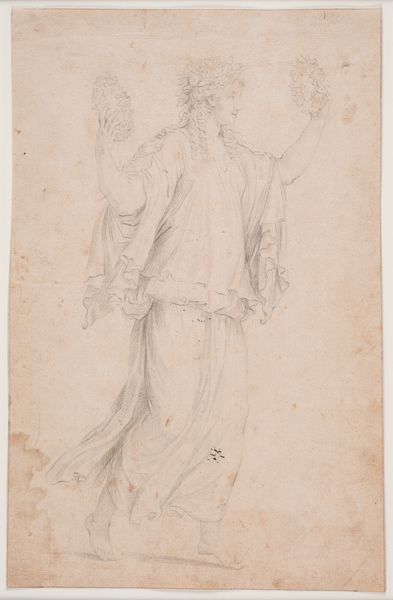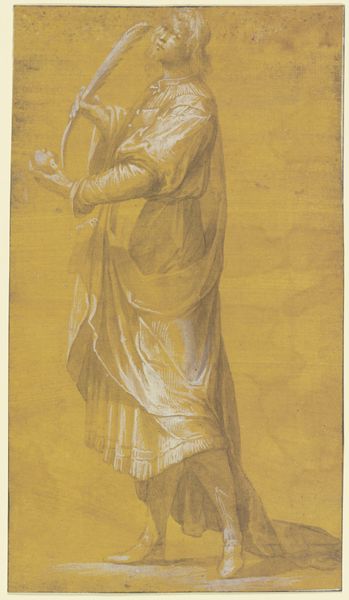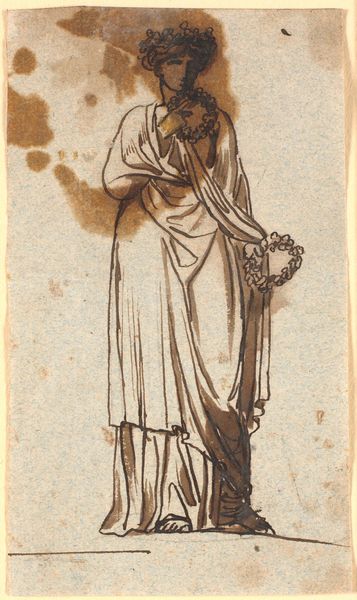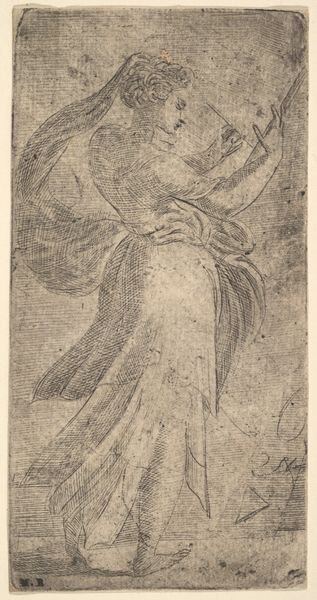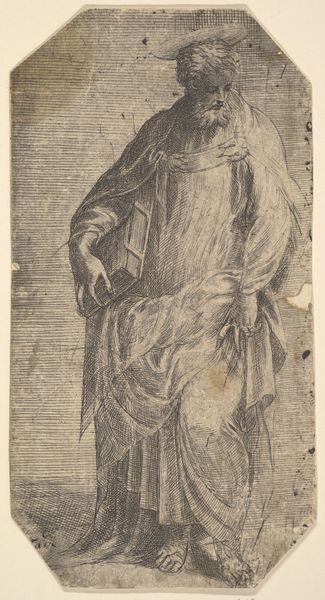
drawing, paper, dry-media, ink, chalk, pen, charcoal
#
drawing
#
allegory
#
charcoal drawing
#
figuration
#
paper
#
charcoal art
#
dry-media
#
ink
#
chalk
#
pen
#
charcoal
#
history-painting
#
academic-art
Dimensions: 144 × 98 mm
Copyright: Public Domain
Editor: So, here we have Biagio Pupini’s “Standing Woman with Laurel Wreath,” a drawing made with pen, ink, chalk, and charcoal. It feels classical, almost like a statue study, but there's also something unfinished and fragile about it. What do you see in this piece? Curator: I see a reflection of the socio-political context in which it was created. Academic art like this, while seemingly timeless, was often used to uphold existing power structures. Who is being crowned with this wreath, and who is excluded from that honor? What kind of ideal femininity is promoted? Editor: That's a really interesting point. I hadn't thought about the potential exclusions in the image. It made me consider her static and idealized representation within that frame. Curator: Exactly. How might we interpret this figure in relation to contemporary debates about female agency and representation? Think about who gets to define “virtue” or “accomplishment,” symbolized by the laurel wreath. Whose stories are validated and whose are erased in these classical portrayals? Editor: I see. It is almost as though she embodies specific ideals that certain members of society might either pursue or even challenge. Curator: The pose, the drapery – these were not neutral artistic choices. They carry layers of historical meaning related to gender, power, and social status. Academic art often draws from history painting traditions, reflecting and shaping perceptions of history. It implicitly sets precedents, defining who counts as important. Do you notice other visual markers of status here? Editor: I guess, her bare feet, yet formal attire…It hints at a specific societal role, caught between earthliness and the ideal. Curator: Precisely. And this tension, I think, makes the artwork relevant to our present. Thinking about visual language as a tool helps us become more discerning viewers of contemporary images as well. Editor: Thanks. Now, I’ll view this through such different lenses. Curator: Indeed. And art becomes such a rich commentary once those narratives become more prominent.
Comments
No comments
Be the first to comment and join the conversation on the ultimate creative platform.
